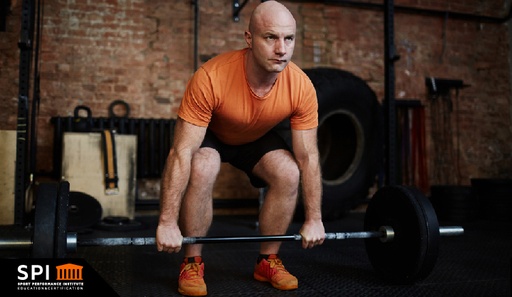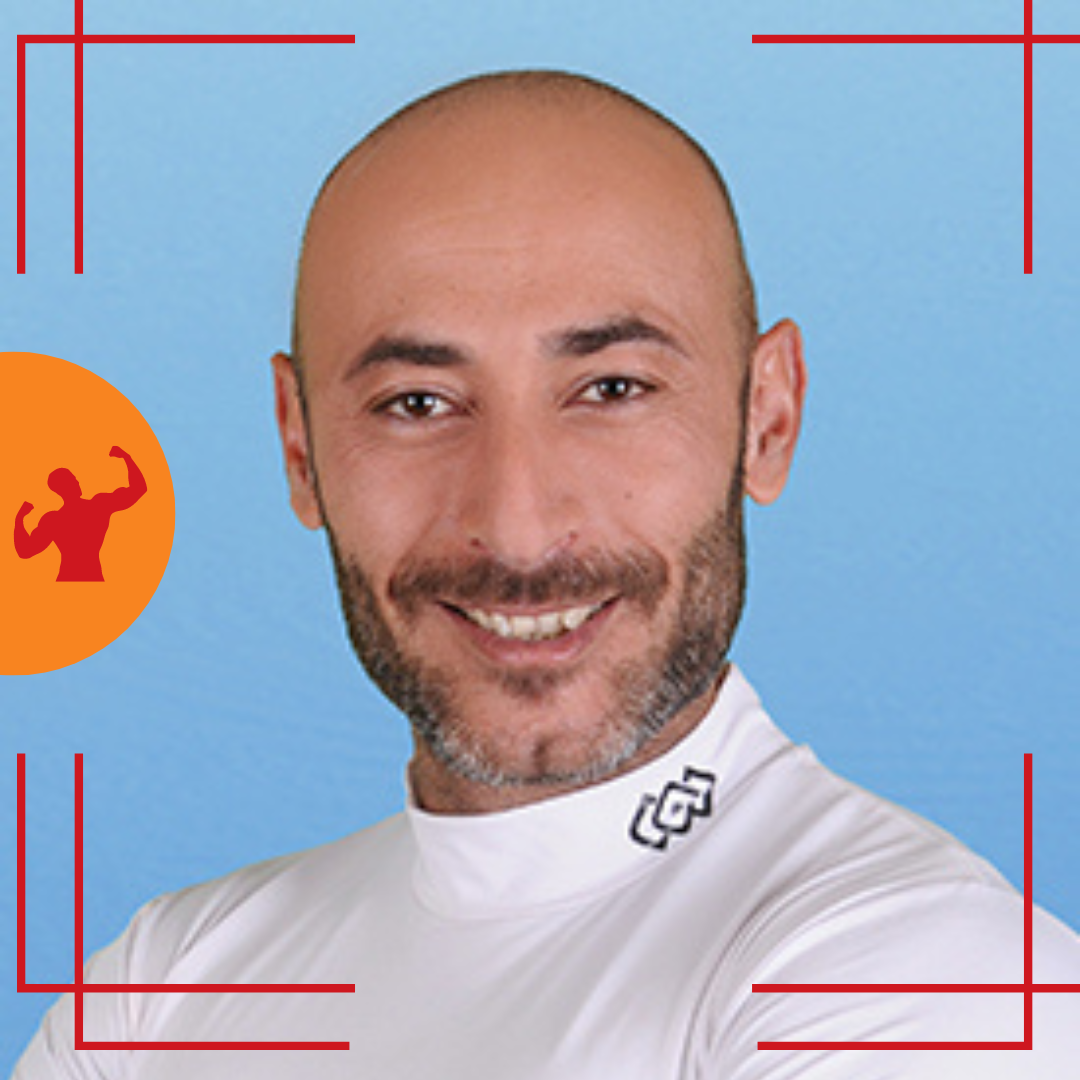Courses
Start your course today!
Skill up and have an impact! Your business career starts here.
Time to start a course.
Leaderboard
No leaderboard currently :(

Duration: 3 hours/session; 2-3 sessions/week; for 2.5 months
Number of seats: 25
This comprehensive course is designed to provide the participant with the knowledge and skills needed to develop fitness programs for health, appearance and fitness. Topics include exercise physiology, anatomy, detailed descriptions of the role of exercise and nutrition in weight control programs, health aspects of strength training, and strength program design criteria.
Video in English
Video in Arabic
Section I: Anatomy and Exercise Physiology in relation to Fitness Training
Muscle Fibers and Motor Units
• The 4 fiber types
• Henneman’s size principal
• Myosin isoforms and fiber type alteration with training
Energy Metabolism
• Energy systems and metabolic pathways
• Pyruvate and the metabolic choice
• Co-dependence of metabolic pathways
Cardiac Adjustment to Exercise
• Problems with 220-age heart rate formula
• Cardiac drift, sweating and thermal load
• Proper use of heart rate and the determination of training intensity
Skeletal and Muscular Anatomy
• Overview of skeletal system
• Overview of muscular system
Section II: Exercise for Weight Loss
• Benefits and risks of weight loss
• Manipulation of hormonal factors to optimize weight loss
• Respiratory exchange ratio and the determination of optimal exercise intensity
• Interaction of fat, carbohydrate and protein metabolism during exercise and weight loss
• Long moderate endurance versus interval training
• Nutritional aspects of weight loss and the Canada Food Guide
Section III: Weight Training Program Design
• Metabolic, neural, and structural causes of fatigue
• The implications of high level of lactic acid to strength development
• Volume, Intensity, and Tempo
• Rest between sets and recovery between sessions
• Exercise selection
• Professional Program Design
Section IV: Warm up, Cool down, and Flexibility
Warm up and Cool down
• Physiological benefits of warm up
• General, Specific, and Passive warm up
• Designing a warm up program
• Importance of cool down
Flexibility
• Types of flexibility
• Dynamic vs. Static stretching
• Flexibility Programs
• Stretching Controversies
Section V:Training for Special Population
• Pregnant Woman; Elderly; Kid
Section VI: Fitness Testing
• Skin Fold Fat Test, Muscular Strength Test
• Muscular Endurance Test, Flexibility Test
• Cardiovascular Endurance Test
Delivery method: combination of online (Zoom) and Live (Gym) training

Number of seats: 25
Duration: 3 hours/session; 1-2 sessions/week; for 2 months
Teacher: Nidal Malaeb

Personal Trainer Entry Qualification
This practical course is designed to teach proper exercise techniques for common and specialized free weight, spotting, Swiss Ball, and Balance Training.
This practical course (24 CECs) is designed to teach proper exercise techniques for common and specialized free weight, spotting, Swiss Ball, and Balance Training. In addition, you will learn teaching progressions, biomechanics of weight lifting, how to identify and correct common technical problems and multi-joint free weight movements. Theories of skill learning and proper communication are also detailed. Theoretical materials are explained in a class room setting and the practical exercises are given in the gym.
Video in English
Video in Arabic
Course details:
Motor Learning
- Stages of skill learning
- Feedback and communication skills
- Teaching progression
Tools to Enhance Learning
- Proprioceptive Training
- Video
- Imagery
Exercise Technique
- Proper exercise technique and Muscle Anatomy:
- Trapezius
- Chest
- Upper Back
- Rotator Cuff
- Deltoids & Arms
- Core
- Legs
- Weight Training Biomechanical Analysis
- Spotting
- Correcting common errors
Some of the exercises include
Squats Front | Squats |
Split Squat | Lunges |
Step Ups | Deadlift |
Romanian Deadlift | Sumo Deadlift |
Back Extensions | Rowing movements |
Cleans | Hang Cleans |
Clean Pulls | Snatch |
Push Press | Jerks |
Trunk and Shoulder Stabilization Exercises Bench Press and variations
Stabilization Routines (Core strength Exercises; Hip stabilization; Rotator Cuff Exercises)
Balance and Proprioception (Physio ball; Swiss ball; Teeter Boards; Unilateral Training)
Power Training (Intro to Plyometric & Jump Training; Olympic Lifts)
Delivery method: combination of online (Zoom) and Live (Gym) training

Duration: 3 hours/session; 2 sessions/week; for 1 month
Number of seats: 25
Professional Personal Trainer Certifications
This course is designed to provide the participant both general and advanced nutritional information. Nutrition will be examined from a health perspective.
Facts and fallacies will be explored. Topics to be covered include Carbohydrates, Fats, Proteins, Vitamins and Minerals, Digestion, Dietary Analysis, Nutrition for Health and Chronic Diseases, Caloric Calculation and Weight Loss Fad Diets.
Video in English
Video in Arabic
Macronutrients
Carbohydrates: Glucose, Fructose, Sucrose, Lactose, Starches, and artificial sweeteners…
Fats: Mono & Polyunsaturated fat, Saturated and Hydrogenated oils, Cholesterol, Omega 3…
Proteins, Essential and Non-Essential Amino Acids.
Water.
Vitamins and Minerals
Fat soluble vitamins (Vitamins E, A, D and K).
Water soluble vitamins (Vitamins B and C).
Major Minerals (Calcium, Chloride, magnesium, phosphorus, potassium, sodium, sulfur).
Trace Minerals (iodine, iron, zinc, selenium, fluoride, chromium; copper, manganese, molybdenum).
Deficiencies and toxicity.
Digestion and Absorption
The Digestive tract
Digestion and absorption of lipids..
Digestion and absorption of proteins.
Digestion & absorption of Carbohydrates.
The Glycemic Index.
Dietary Analysis
Concepts in dietary analysis.
Macronutrient analysis.
Vitamin and mineral analysis.
Food Labels.
Nutrition in Health and Disease.
Health eating.
Nutrition and heart disease.
Nutrition and cancer.
Weight Loss Fad Diets
Health risks of obesity.
Health risks of weight loss.
Fad diets.
Energy Production and Metabolism
Metabolic rate.
Caloric need calculation.
Factors affecting metabolic rate
Delivery method: online (Zoom) training

Duration: 6 Hours
Number of seats: 20
Sales is converting your prospects into clients. The sales part gets them to say YES and pay for your services.
If you are interested in getting your prospects to say YES without you feeling like a cheesy sales person or the client feeling uncomfortable, then this workshop is for you.
This workshop will help you answer the following questions:
· Sales Philosophy: What do people really buy? And Why?
· How to perceive and use Selling as a service? If you don’t sell them, then you don’t get to serve them.
· What is the sales process and why is it important to follow a specific process when you are selling?
· Why are you the best person to help your ideal client? And how to get them to buy from you?
· Why pain, biggest worries and stresses are your friend when it comes to selling?
· How can you use desires to help find more clients?
· How to find your ideal client and sell with passion?
· How to handle objections, especially when it comes to money?
· How to invite, present, follow up, close the deal and get people started with you?
· How to use the art of storytelling to sell?
· How to sell on social media and get more clients?
· What is an Elevator pitch and how you can use it in social events?
If you want to know the answers to the above questions and how to apply them in the real world, this workshop is certainly for you.

